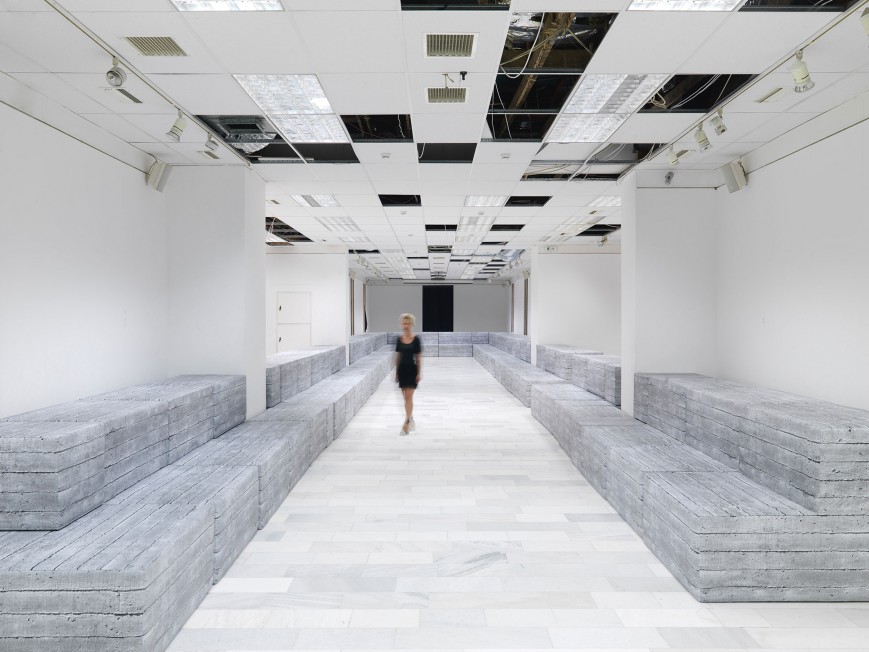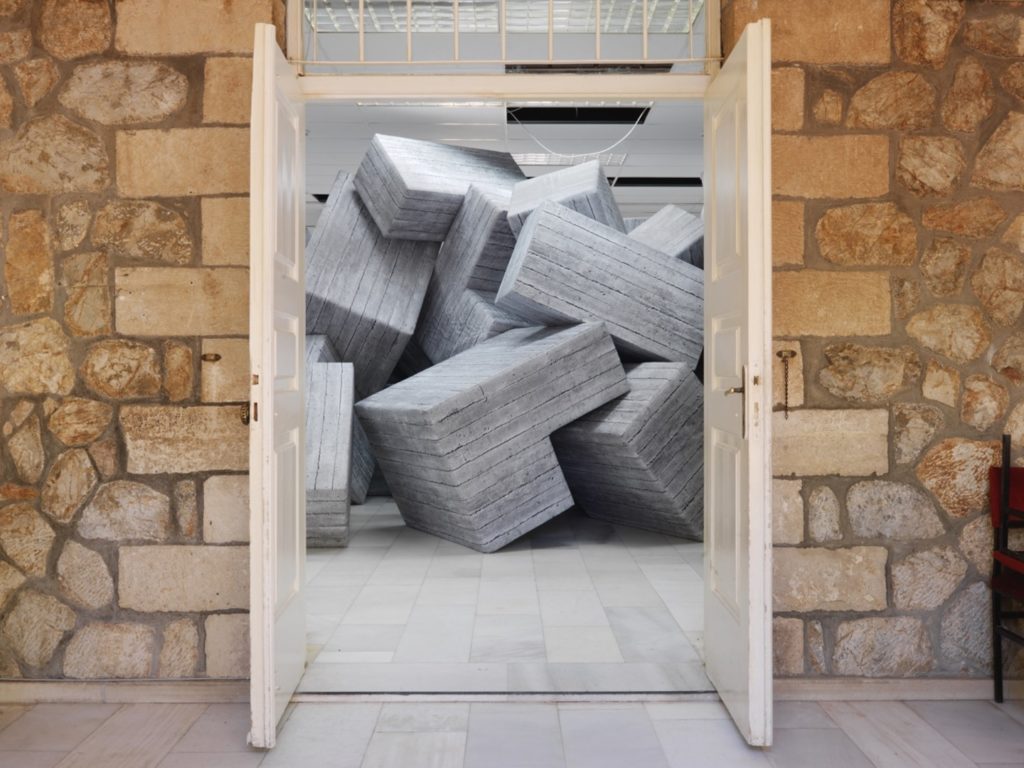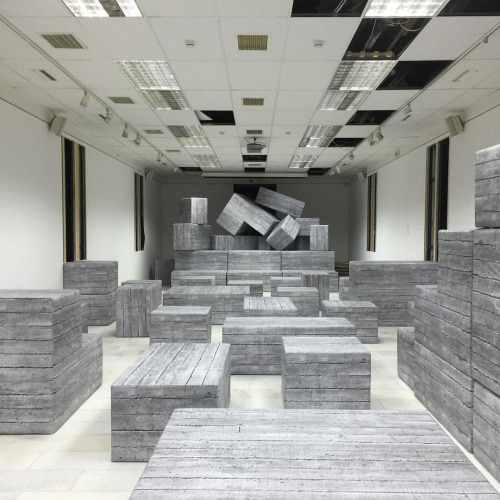Andreas Angelidakis
DEMOS
September 14, 2016–September 16, 2017Public Program, Documenta 14, Athens
The first definition of Demos that comes back from google is “the populace of a democracy as a political unit”, referring to the Ancient Greek Δήμος, the people of a state.
Further down on the list of definitions, Demos comes back as the plural of Demo, or demonstration. Demo can mean the test run of a software, the preview of a piece of music or even a street demonstration. Even further down the list, Demo comes back as demolition.
On the hill of Pnyka in 5th century BC, a set of steps provided a higher spot for the speaker of the demos. The combination of speaker, audience and steps was called Ecclesia of Demos, often translated as Assembly, “a group of people gathered together in one place for a common purpose”. If you google Ecclesia or Assembly, you might realize that in our world of screens, Assembly means a “a construction code language for a computer, or other programmable device”. It is a language where modules are combined as parts to a variable architecture. Could a variable architecture mean a Demo Architecture? Trying out different spaces, to produce a variety of Ecclesias, a typological series for the gathering of a populace as a political unit?
The gatherings of today take many forms. People gather on the streets to demonstrate, in public space or on walls and threads on the internet, posting their comments, replying, discussing. A single user can have a voice as strong as a corporation, a teenagers’ video of a cat can receive more likes than a political leader. Change and revolution can be initiated outside of the structures that we recognize as dominant.
Following the brief for a Parliament of Bodies by Paul B. Preciado, a module for a Demo is proposed. A single soft concrete step, upon which one can stand up to speak or sit down to listen. The module is multiplied into copies and variations of itself, like “a construction code language for a computer or other programmable device”. A physical space is a programmable device. The module is placed along the entire perimeter of the space. As people gather and sit on opposite steps, they look at each other as much as they look at the programmed event. The Ecclesia of Demos has been inverted, no longer a central plinth to provide visibility to one but a gathering for all. The next time the people gather, the space has shifted into two exedras of opposition. Another time they find a single mountain of steps with the seating facing outwards. Are the steps for the speakers or for the audience? Would the audience occupy the center to be surrounded by speakers, or did the audience indeed become the speakers?
Each variation is a demo for a space of public programs. Each demo is demolished to make way for the next Demos. What the modules negotiate is the distinction between stage and audience, between performer and participant, between broadcasting and receiving, hierarchies that are constantly being challenged in the age of the internet. As the Public Program of d14 unfolds over time, the modules gradually form a language, each variation of the space a new definition of Demos.
Endnote
The Public Program of d14 in Athens was located inside a late 1800s military 1967-1974. When democracy was restored, the building was renovated into an exhibition venue. As the Demo begins to develop its definitions, the building shell itself begins to negotiate its own history, sporadically removing layers of exhibition walls, uncovering parts of the space that witnessed its use as a headquarters for the military police, the famous EAT ESA torture chambers. Smaller gestures begin to appear, perhaps wall panels removed to uncover windows blocked by metal bars, ceiling panels shifted to allow for lighting and projection hardware. As the module configurations negotiate the parameters of a public program, the building launches an investigative renovation of its own history.
-Andreas Angelidakis



